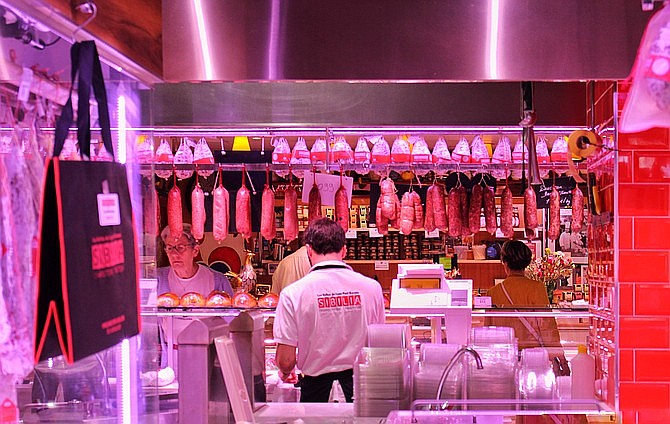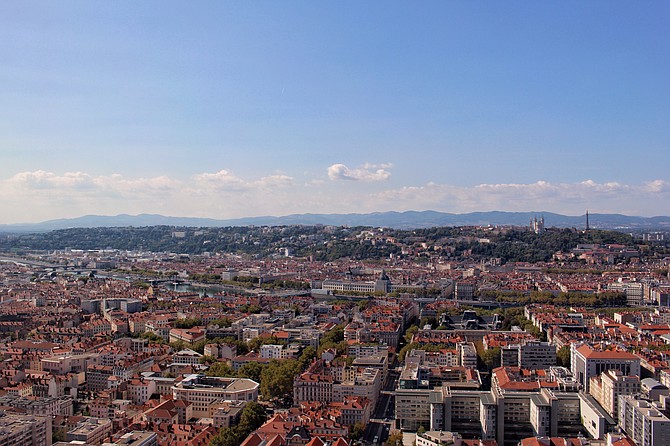Lyon, France: a city of curiosities, not just gastronomy
The sprawling city of Lyon, with the old quarter and the hills of Fourvière in the distance.
If Paris has its Seine which divides the city into the left bank and the right bank, Lyon, the third largest city in France, is landlocked by two large rivers, the Rhône and the Saône. Of Parisit’s a short two-hour high-speed train ride south.
Lyon is the flagship of the Auvergne-Rhône-Alpes region. Its vibrant cultural life lends an air of sophistication as well as the energy of a college town where talent and ideas arise and merge into one, like the rivers that run through the city.
Lyon gastronomy

One of the many stalls at the Halles de Lyon Paul Bocuse, the city’s first covered market.
Arriving in Lyon, one has the impression of taking part in a pilgrimage, of crisscrossing a culinary mecca and coming across a colony of chefs and food lovers engaged in a ritual of food worship.
But the foodie capital of France, or perhaps the world, isn’t just about the food – delicious to die for the food – as any frequent traveler knows, it’s also a place that captures a sense of visual discovery, and there are many sites to visit.
To see: art, architecture, history
Far from any speech of culinary revolt, on Place Bellecour, in the heart of the Presqu’île or the peninsula, all distances from the city are measured from here. A statue of Louis XIV stands in the middle of the square and not far away is another statue paying homage to the illustrious son and author from Lyon, Antoine de Saint-Exupéry. The open space invites revelers to just laze around, strike up a conversation, and let the world go by.
A walk along the rue de la République resembles a miniature Paris with its Haussmann buildings. Lyon is like Paris on a human scale. Like all major French cities, the old and the new have found their way into part of the city’s architecture. Take the opera house, for example, considered an “architectural tour de force” where the ancient structure is augmented by a futuristic design of barrel vaults of steel and glass. It represents the future aspirations of the city, while remaining linked to its roots.
Cinema was born in Lyon, thanks to the Lumière brothers. The city is also becoming home to thriving art galleries and street art, where young artists from around the world showcase photography, graphics and murals, exhibiting year-round.
For art puritans, a modest collection of antiques and works by Rodin, Matisse, Picasso, Rubens and several French Impressionists can be found in the city’s Museum of Fine Arts.
The historic district of Lyon is a maze of streets and unmarked passages called traboules perpendicular to the river. Originally used by merchants to expedite the transport of goods up and down the river, the traboules also became vital assets for the resistance during the Nazi occupation of France.
Once in Lyon, you must climb to the heights of Fourvière via a funicular ride, which offers a panoramic view of the city and a close view of Notre Dame de Fourvière, Lyon’s most emblematic monument. It is a distant cousin of the Basilica of the Sacred Heart of Montmartre in Paris.
A few meters from the Basilica are the remains of a Roman colony that established a community there around 43 BC. A large theater sprawled across an empty lot as students sprawled with their backpacks were busy picnicking on baguettes, wine and cheese.
Traveling to Lyon and seeing the city induces a clear feeling of nostalgia and a certainty of returning. Lyon can instantly become a fitting escape not only for pilgrims seeking culinary perfection, but also for those who wish to immerse themselves in a city up close with a visual experience that benefits the hungry soul.


Comments are closed.